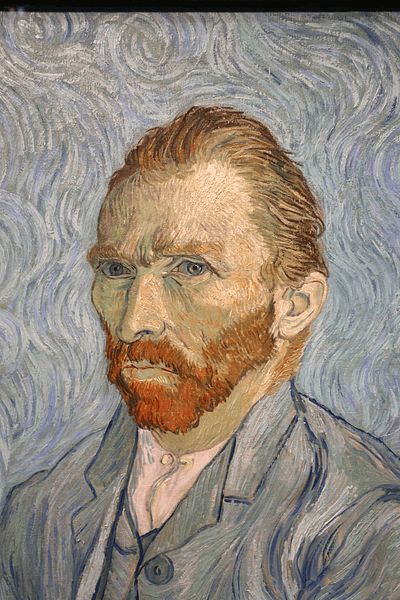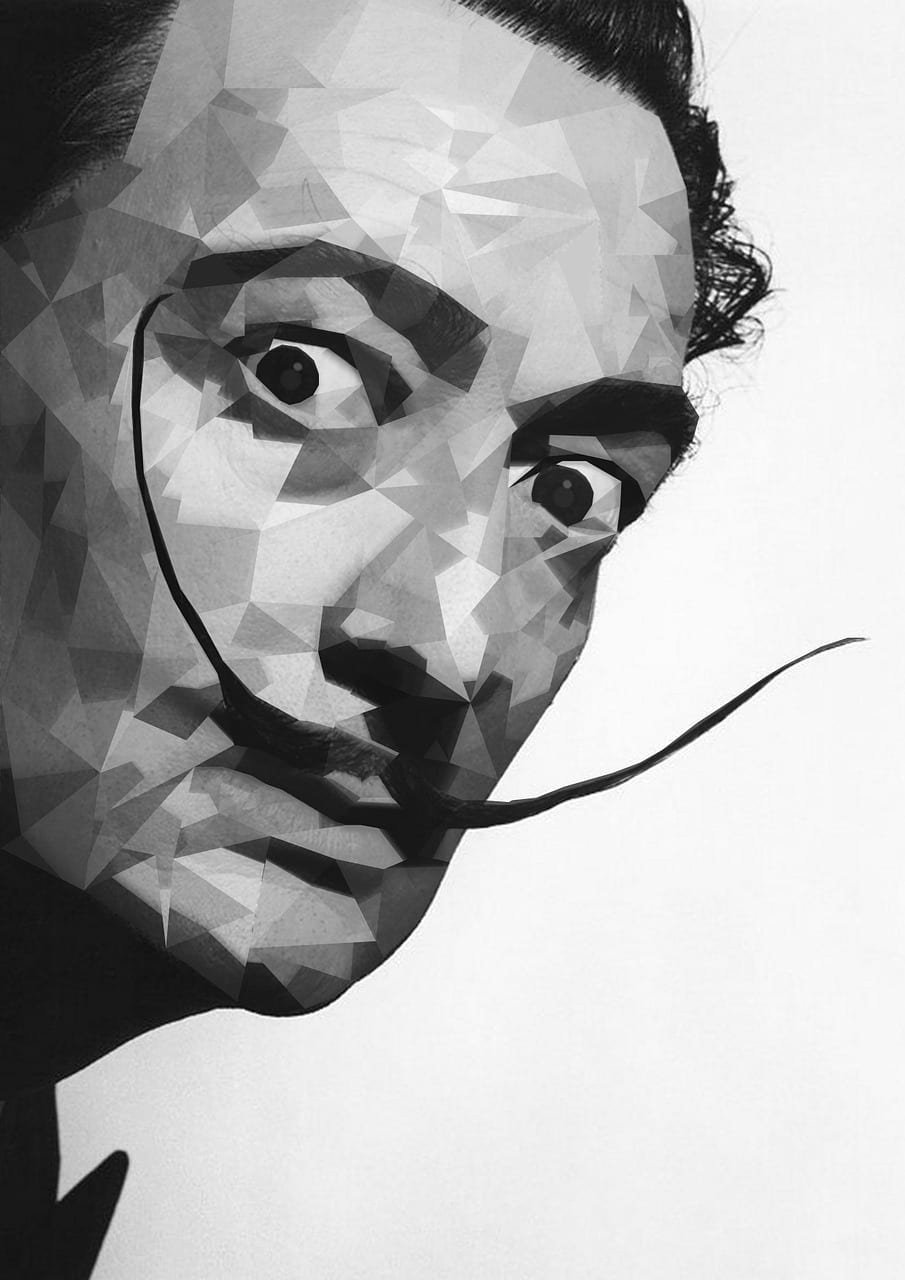
Vincent van Gogh, along with Paul Gauguin, Georges Seurat, and Paul Cezanne, was a Postimpressionist. He was a Dutch painter, globally considered the greatest after Rembrandt. His painting career was brief. Most of his reputed art was done in the last three years of this. His influence on modern art is irreplaceable, particularly in the aspect of expressionism. He pursued art as a way to deal with his sadness, and studied it at academies. Van Gogh went to Paris where he met Gauguin and experienced the art of impressionists like Seurat and Pissarro. Here, he discovered his individual style, with his paintings taking on more color, being less traditional, and his singular ability with the brush.
Although his art career was brief, he painted more than other painters who had longer careers. Van Gogh created more than 800 oil paintings and executed approximately 700 drawings. Nonetheless, during his own lifetime, he sold only one of his paintings. Famous Van Gogh art is familiar by its distinctive stark color, brushwork that is coarse yet unique, and forms which are contoured. All these characteristics display the deep angst that van Gogh was going through. Depression drove him to commit suicide in 1890. In the early years of his life, he was rejected in love and turned away from joining the church. He chose to become a missionary, but left that calling due to frequent disagreements with his superiors. As he gradually sank into a state of despair, he began to draw.
After city life, he moved to Arles. He was joined in his new home by Gauguin, but the two fought on Christmas Eve. Angry and disturbed, van Gogh cut off his left ear and was placed in hospital. Throughout his life, he showed signs of mental illness and was confined to facilities. Yet, he continued to find some solace in art and this makes Van Gogh paintings all the more sought-after. In the final months of his life, he moved into the home of a fellow artist, who was also a doctor. In July 1890, the artist shot himself and passed away two days after that. It is unfortunate that he was impoverished all his life, and never quite found the self-worth he deserved while he lived.
Famed Van Gogh art
Influenced by Impressionists, like Monet, Degas, Pissarro and Seurat, van Gogh was persuaded to adopt a lighter color palette in his famous Van Gogh artistic style. His loose brush work and swirling patterns in his art are clearly from the inspiration of Rubens. He wanted to portray color, especially in his nature paintings, not only as a realistic representation of his subjects, but as a reflection of his own emotions. In the mature period of his life, he became more powerful in his execution of paintings like Starry Night (1889) which was painted while he was institutionalized. Painting in the particular van Gogh style of lush color palettes and dynamic brushstrokes, he brought flowers and plants to new life. It is a pleasure to present the following 8 famous van Gogh paintings.
The Potato Eaters (1885)

An early canvas, this is considered one of van Gogh’s first artistic masterpieces. He painted this while he lived with peasants in Nuenen. What the artist desires to show in this work is the common people and their way of life. Van Gogh seeks to be true to his subjects and creates them in a drab color palette. The painting echoes the dull conditions of living of these laborers. Van Gogh art manifests a realism, but with the reflection of true feeling in the artist’s mind. You can see the loose brushwork in the rendering of the hands of the peasants and the faces, as they group together around a lantern. The meager meal of potatoes is also depicted to indicate the dire poverty these people lived in.
The scene is evocative of all the sadness and depravity of life. Yet, the work never sold in van Gogh’s life. His brother, Theo, tried to sell it, but people were only interested in the light palettes of the French avant-garde Impressionists. The painting was famous after his death, as were most of his works. It is housed in the Van Gogh Museum in Amsterdam.
The Courtesan (1887)

When Van Gogh spent time in Paris, he was exposed to Japanese wood-block prints. These were typically created by Japanese Ukiyo-e masters. Van Gogh was impressed by these artists and created a reproduction of a Japanese master, Eisen. Moving slightly away from true impressionism, this work depicting a courtesan, is more enlarged than Eisen’s original. A Japanese kimono-clad geisha is standing in a resplendent water garden in which there are cranes and frogs. Van Gogh used ideas for the foliage from other Japanese prints he owned. The oil on canvas creation is displayed at the Van Gogh Museum in Amsterdam.
Sunflowers in a Vase (1888)

Among Van Gogh’s art, a popular and often viewed series of paintings are those of sunflowers. The paintings were executed to be part of the decor of the house in Arles. When van Gogh began the series, he intended them especially for Gauguin. You can see the luxuriant brushstrokes in the flowers and how they add texture to the rendition. Van Gogh employed different shades of the yellow color spectrum to depict sunflowers, mainly because they were the new pigments available at the time.
He wanted to create as much nuance and tone as he possibly could. Working with an array of yellow, brown and russet shades, he managed to show the lifespan of these flowers in his series. Van Gogh deftly used bright yellows to show blossoms in full life, and ocher yellows to depict wilting flowers. Each flower shown has a life and a texture of its own, the way he actually saw them in the Provencal sun. You can see some paintings from the series at the National Gallery of Art in London, as well as the National Gallery in Washington D.C.
Cafe Terrace at Night (1888)

This was a scene in the painter’s initial repertoire at Arles. It is a distinguishing piece of art as it is the first painting in which van Gogh used a background which is nocturnal. The painting is a fine example of his ability in contrasting striking colors. He achieves a luminous surface on the ground, and this is opposing the stark blue-black tone of the night sky. You can actually feel yourself walking on the cobblestone road. The café that he took inspiration from exists even to this day. It is akin to a pilgrimage site for artists and van Gogh fans.
View of Arles, Flowering Orchards (1889)

Irony is at its best when an artist is at his worst. When Vincent van Gogh had his initial break with reality, he was hospitalized, but he continued to paint. After his release, a brief period before which he would be hospitalized again, he painted View of Arles during a second hospitalization. At this tumultuous period of his life, Gauguin had left him and his brother was too busy making plans for his own marriage. Van Gogh felt neglected and alone. He was malnourished and in poor mental health. Experiencing hallucinations and vivid nightmares, he was distressed.
The villagers started a petition to have him institutionalized, and he was admitted to hospital again. Here, he painted the View of Arles, in all the vibrant colors of the landscape he was so used to. Dramatically executed in a lush colorful purple haze of light, the painting is representative of van Gogh’s loneliness. This symbolism is shown in one of the best artworks of van Gogh by a row of blackened trees, somewhat like a barrier to a beautiful view. This is displayed at the Musee Rodin in Paris.
Starry Night (1889)

This painting is considered an epic by art lovers and scholars alike. Out of all the famous van Gogh art, this stands out as the pinnacle of his success. It was rendered from memory. Starry Night is the glorious depiction of the artist’s state of mind at the time. The sky, for instance, is synonymous with what was going on in van Gogh’s psyche. The emphasis on dramatic swirling patterns in the sky shows this. Why this painting is considered so unique is that it shows a radical departure from his earlier realistic landscape work. In Starry Night, through the movement of curly patterns, the artist somehow still manages to strike a balance, a uniformity in the tension. There is the presence of obvious chaos, with the proportion of composition and systematic arrangement of all the individual aspects of the scene.
Self-Portrait with Bandaged Ear (1889)

After van Gogh cut off a part of his ear with a razor in Arles, he painted himself. He was recovering and pondering the incident and thinking of his illness. Van Gogh always believed that his art would be his salvation, though he would drift into manic episodes of depression and happiness regularly. Painting himself brought him some relief. It was a way of telling himself that he was still in control of his life and his work. Here, he depicts himself with all the careful detail of realism, in the cloth, the facial folds, the hat, and of course, the bandaged ear.
Church at Auvers (1890)

When van Gogh finally left the institution where he was being treated for his mental condition, he traveled to Auvers. This was on the outskirts of Paris. He painted this during the last few months of his life, so it holds special significance among all van Gogh’s art. Such a prolific artist he was, that he has managed to imbibe a sense of movement in the scene with his signature use of a contrasting palette. Again, true to his style, the brushstrokes are dramatic and powerful, drawing the viewer into the scene. He has painted his own flattened and distorted version of the church lying in its own shadow. A recurring symbolism occurs in all his paintings, that spirituality is in nature and not in mere buildings and structures. The swirling designs in the sky in black depict his own mental disquiet just waiting to explode, perhaps.

